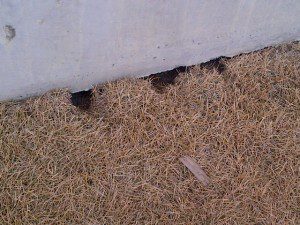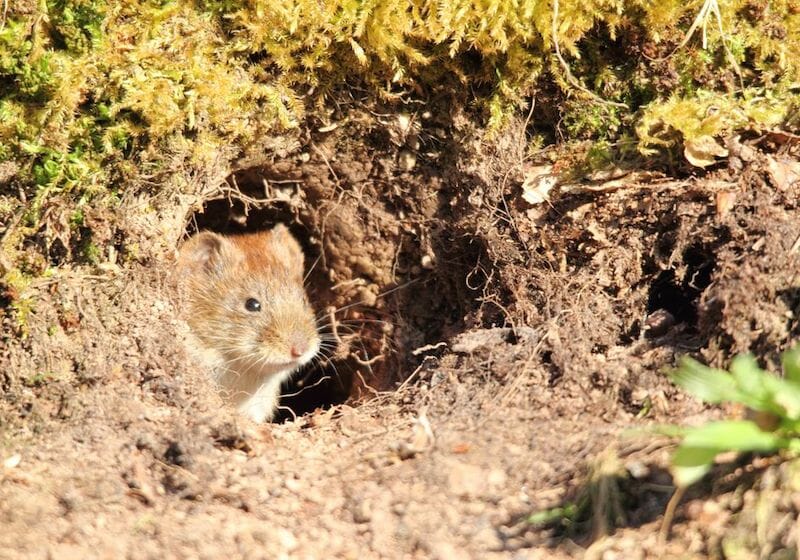Protect Your Utah Property: Advanced Vole Control Techniques
Protect Your Utah Property: Advanced Vole Control Techniques
Blog Article
Mastering Vole Bug Control: Comprehensive Insights on Invasion Prevention and Therapy Approaches
By recognizing the subtle indicators of vole invasion early on, we can take aggressive measures to stop widespread damages. In this conversation, we will certainly explore the subtleties of vole habits, dive right into the recognition of infestation indicators, and discover the most reliable prevention and therapy techniques.
Recognizing Vole Actions
Examining the foraging patterns of voles offers important insights right into their habits and habitat choices. Voles, little rodents resembling computer mice, are herbivores understood for their underground tunneling tasks. By observing their foraging habits, researchers can gain a better understanding of where voles like to establish their environments and the extent of their environmental effect. Voles are prolific dog breeders, with a solitary women qualified of generating several litters in a year, making it critical to comprehend their habits for effective insect control strategies.
Research study shows that voles display discerning feeding habits, liking roots, seeds, and roots - vole yard damage. This nutritional preference affects their foraging patterns, leading them to areas rich in plant life and ground cover. In addition, voles are understood to produce fancy passage systems for foraging and nesting purposes, suggesting a high level of versatility to their surroundings
Recognizing vole actions is important for implementing targeted parasite control procedures that interrupt their habitat preferences and foraging tasks. By researching their actions, professionals can develop extra efficient prevention and treatment techniques to handle vole invasions.
Identifying Signs of Vole Problem
Vole infestations can be found by identifying details indicators of their presence in a location. One of the most usual signs of a vole invasion is the existence of surface area runways. Voles create networks of slim paths on the ground that are generally around 2 inches large. These runways are often located in verdant locations or beneath compost or ground cover where voles can move openly and look for food.
One more key sign of vole infestation is the visibility of little burrow openings in the ground. In addition, voles are understood to leave behind eaten plant stems, origins, and light bulbs near their burrow openings, showing their feeding activity in the location.
Finding these droppings along runways or near burrow openings can validate a vole invasion. By being attentive for these indicators, home proprietors can immediately attend to vole infestations and prevent additional damage.
Carrying Out Positive Prevention Actions
To successfully alleviate the risks related to vole invasions, building owners can proactively carry out an array of safety nets focused on securing their landscapes and gardens. One important action is to maintain a well-trimmed grass and frequently remove high weeds and thick plant life, as voles are drawn in to locations using sufficient cover. Installing barriers such as hardware Continued fabric underground around susceptible areas like garden beds can likewise help stop vole intrusion. Furthermore, maintaining yard locations tidy and lessening clutter where voles can hide or nest is vital in decreasing their visibility.
Furthermore, using natural vole deterrents like castor oil-based repellents or predator pee can work as effective safety nets. It is likewise advisable to regularly check outdoor rooms for any type of indications of vole activity, such as paths or delve openings, to deal with prospective infestations promptly. By adopting these aggressive avoidance techniques, residential or commercial property proprietors can considerably lower the possibility of vole damage and preserve the health and visual appeals of their landscapes.
Reliable Therapy Strategies
Including targeted capturing methods and making use of accepted rodenticides are necessary elements of efficient treatment approaches for taking care of vole infestations. Trapping can be an efficient way to reduce vole populations, particularly when placed strategically in their energetic runways. Break catches and live catches can both work, with the last permitting for the capture and relocation of voles. When making use of rodenticides, it is essential to comply with safety guidelines to avoid damage to non-target pets and family pets. Area rodenticides in secure bait terminals to decrease dangers to unintentional targets. Additionally, habitat adjustment, such as minimizing ground cover and removing resources of food, can assist pop over to these guys discourage voles from infesting an area. Routine tracking and maintenance are additionally vital facets of successful therapy methods to make sure that vole populations are maintained under control. By incorporating capturing, rodenticides, habitat alteration, and regular monitoring, efficient vole parasite control can be achieved.

Surveillance and Upkeep Tips
Preserving a systematic timetable for monitoring and carrying out regular maintenance tasks is essential to sustain the efficiency of vole pest control steps. Regular tracking enables the very early discovery of vole task, allowing punctual treatment prior to infestations intensify. To successfully keep an eye on vole populations, strategically placed this post traps can be utilized in vole paths or near burrow entrances. By routinely checking these traps, homeowner can assess the extent of vole task and adjust control techniques appropriately.
Additionally, maintaining a clean and well-kept landscape is important in vole avoidance. Cleaning away particles, such as heaps of timber or thick plants, removes potential vole environments. Routinely cutting lawns and trimming plants helps decrease vole concealing areas and decreases their accessibility to food resources.

Final Thought
To conclude, grasping vole bug control needs a strong understanding of vole habits, the ability to recognize indicators of invasion, carrying out proactive avoidance procedures, effective therapy techniques, and regular monitoring and upkeep. By taking an extensive approach to vole control, people can properly manage and stop invasions, eventually shielding their property and surrounding atmosphere from damage created by these small rats.
In this conversation, we will check out the nuances of vole behavior, delve into the recognition of invasion signs, and discover the most effective avoidance and therapy approaches.Including targeted trapping techniques and making use of approved rodenticides are vital elements of effective treatment strategies for handling vole infestations. To successfully check vole populations, strategically placed catches can be utilized in vole paths or near burrow entrances. Evaluating and fixing any kind of problems to these structures makes certain that vole control stays effective in securing properties from invasions. By including these surveillance and upkeep practices into a comprehensive vole pest control strategy, individuals can properly manage vole populations and shield their homes from damage.
Report this page